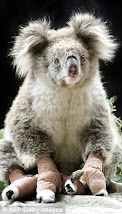Two different men presented to my clinic. The first is a well-muscled, local, mid-thirties and working in a detention centre and I will call him LY. The second is a thin foreigner in his mid-forties, jobless and hard of hearing and I will refer him as FS.
LY came with a complaint of recurrent and unrelenting coughs for more than two months. He also experienced evening sweat and fever. His appetite was low and he had lost a lot of weight recently. He also gave a history of having slept in the same room as an inmate diagnosed as having tuberculosis. His coughs were productive and sputum was yellowish and occasionally streaked with blood with incessant coughs.
FS had the same symptoms except his sputum tended to be frank blood (haemoptysis). In fact, through his mother who accompanied him, I learnt that he had no contact with a known PTB patient.
Whilst LY's sputum came back negative for AFB (Acid fast bacilli) on all three good specimens, FS's was positive on the first sputum sample. There is no doubt as to FS's diagnosis and his chest xray showed the lesions on his upper left lungs. He was promptly treated with an anti-tuberculosis regime.
FS's chest x-ray showed more "stormy" picture of the lung with two cavitating lesions at the apex of the left lung. Though most TB lesions tend to be in the apical region of the right lung due to the more vertical position of the right bronchus, it can also occur on the left upper lobe.
 |
LY's chest x-ray - clear apices with parahilar lesions.
Sputum AFB -ve and treated for community acquired pneumonia
and referred for further evaluation partly due to abnormal left cardiac border. |
 |
FS's chest x-ray - cloudy apex of left lung with cavitating lesions
more "snow storm" noted - Sputum AFB +ve and treated for PTB |
LY's chest xray showed parahilar solid lesions likely to be lymphatic enlargements. He was treated with a twin-course of antibiotics and returned three weeks later to report that his coughs had stopped and he was feeling a lot better.
Fearing that he might suffer from other conditions, I referred to the general Hospital for further evaluation like getting a CT (computerised tomography) of the thorax done on him. His chest x-ray picture had not really changed after two weeks of the antibiotics course. Apparently, according to the respiratory physician, post-treatment lung changes might take a longer time to resolve.
Using chest x-rays alone are not sufficient in making a diagnosis of PTB (pulmonary tuberculosis), the sputum analysis is the gold standard for confirmatory tests. By the same token, it is not enough by just having a plain history as the symptoms are similar in fact, LY's contact with a PTB inmate had convinced me that he was suffering from PTB.













